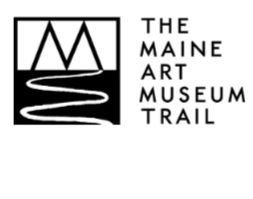Major Exhibition Scheduled to Open this Summer at the Abbe Museum
/
The Abbe Museum will open a major new exhibition in its downtown location on Friday, July 8, 2011 entitled: Indians and Rusticators: Wabanakis and Summer Visitors on Mount Desert Island 1840s-1920s. The show highlights the role that Mount Desert Island played in the cultural and economic survival of theWabanakis (the collective name for Abenaki, Maliseet, Micmac, Passamaquoddy, and Penobscot Indians in Maine), offering a focused look at the seasonal interactions of Wabanakis and rusticators (annual summer visitors from the urban areas of Northeastern US). It will profile various personalities—especially the iconic Penobscot Indian showman Frank “Big Thunder” Loring, whose unforgettable presence on Mount Desert Island spanned 60 years of the Rusticator Era, will be profiled, as well as noted Passamaquoddy guide and artist Tomah Joseph. Serving as guest curators for the project are Bunny McBride, MA and Dr. Harald Prins, highly regarded scholars and authors of Wabanaki history. The stories told, and research presented represent years of collective work with the four tribes in Maine, the Abbe Museum, and Acadia National Park. McBride and Prins have worked with the Abbe on a number of occasions; memorably, McBride curated The Four Mollys exhibit ten years ago when the Abbe first opened in downtown Bar Harbor.
They had this to share about Indians & Rusticators:
About a century ago, the “Indian Encampment” in Bar Harbor was a thriving summer community of Passamaquoddy and Penobscot families, along with a few Maliseet and Mi’kmaq. Many were relatives, others were friends, and almost everyone knew about everyone else. Romantic relationships were often forged in the camp. Babies were born there and elders died. Although we no longer see their bark canoes lining the shore, smell their cooking fires filling the air, or hear them telling stories and singing songs in their ancestral tongues, this exhibit allows us to peek into their daily lives here on the seacoast. From the 1860s through the 1920s, these Wabanaki journeyed to Mount Desert Island to earn a living - to barter or sell their arts and crafts, to provide services as canoeists and guides, and to work at various hotels. But, they also relaxed and enjoyed themselves, much like the rusticators who came "from away."
As guest curators of Indians and Rusticators, we have not only used archives and museum collections to create this exhibit, but also built upon decades-long personal experiences and friendships with Wabanaki people from each of the four tribes. The groundwork for this particular project began eight years ago when the National Park Service invited us to do historical research on the Wabanaki and Acadia National Park. This resulted in the two-volume report, Asticou’s Island Domain, followed by our book Indians in Eden, which serves as a detailed catalogue for the exhibit.
Through images, objects and stories, Abbe visitors will enjoy learning about a layer of Mount Desert Island history that few know about. The exhibit is designed to give the visitor a “you are there” immersive experience. There is a replica of a Wabanaki sale tent with living space, a reproduction of the Bar Harbor wharf and a wide array of “hands-on” components. Visual images, many recently discovered, will help to create a time travel-like experience. Images to look for include historic photographs, a rare placard for an 1880 Indian performance in Bar Harbor, local period maps of Bar Harbor and Southwest Harbor showing the locations of Indian encampments, plus many drawings and etchings. A great variety of cultural artifacts sold by Wabanakis to tourists and rusticators will also be featured, including basketry, bark work, wood carvings, feather work, beadwork, and quillwork. These objects help to illustrate the historical depth of the role Wabanaki art played in the cultural and economic survival of the Wabanaki people, and in making Bar Harbor a unique destination for rusticators.
From the early planning stages to opening day Indians & Rusticators has been a multi-year project and the end result demonstrates the Abbe’s broader program and community goals in action – engaging and informing audiences about the 12,000 year history of Maine’s Native peoples and promoting a diverse dialogue among our visitors, thus revealing the full fabric of our interwoven story. Indians & Rusticators amplifies the historic and first person voices of Wabanaki peoples and will serve as an interesting and interactive educational experience for audiences of all ages. “We want this exhibit to fill in some of the gaps and correct some of the misconceptions of U.S. history in the region and replace stereotypes with an enhanced understanding of Maine’s first peoples,” said Abbe Museum CEO, Cinnamon Catlin-Legutko.
The Abbe Museum has engaged as exhibition advisors James Eric Francis, Sr., Tribal Historian for the Penobscot Nation; Donald Soctomah, Tribal Historian for the Passamaquoddy Tribe; and Donna Loring, Penobscot Nation Tribal Council member and former State Legislator. Their influence and guidance have ensured the relevancy of this project. Local organizations contributing to this project include the Bar Harbor Historical Society, the Mt. Desert Island Historical Society, and the Maine Historic Preservation Commission.
The public is invited to an opening reception on
Friday, July 8, 2011 from 4:00 to 6:00pm.
During the reception, admission to the Abbe Museum is free.





